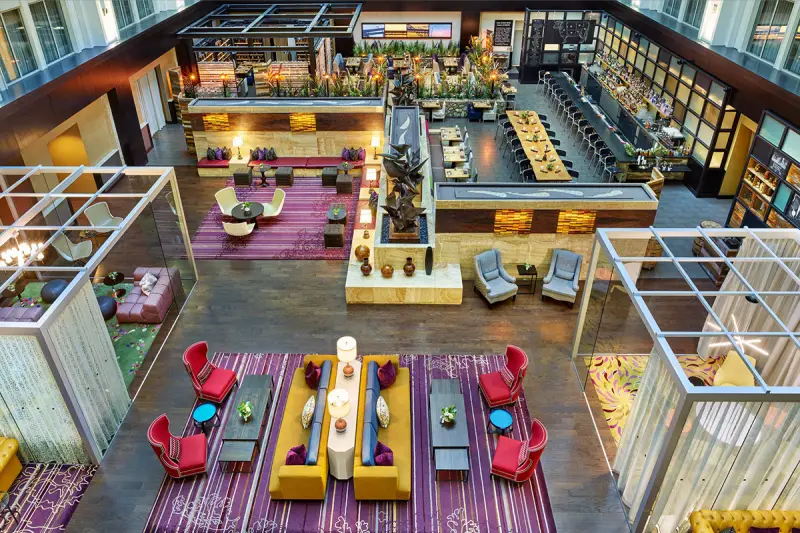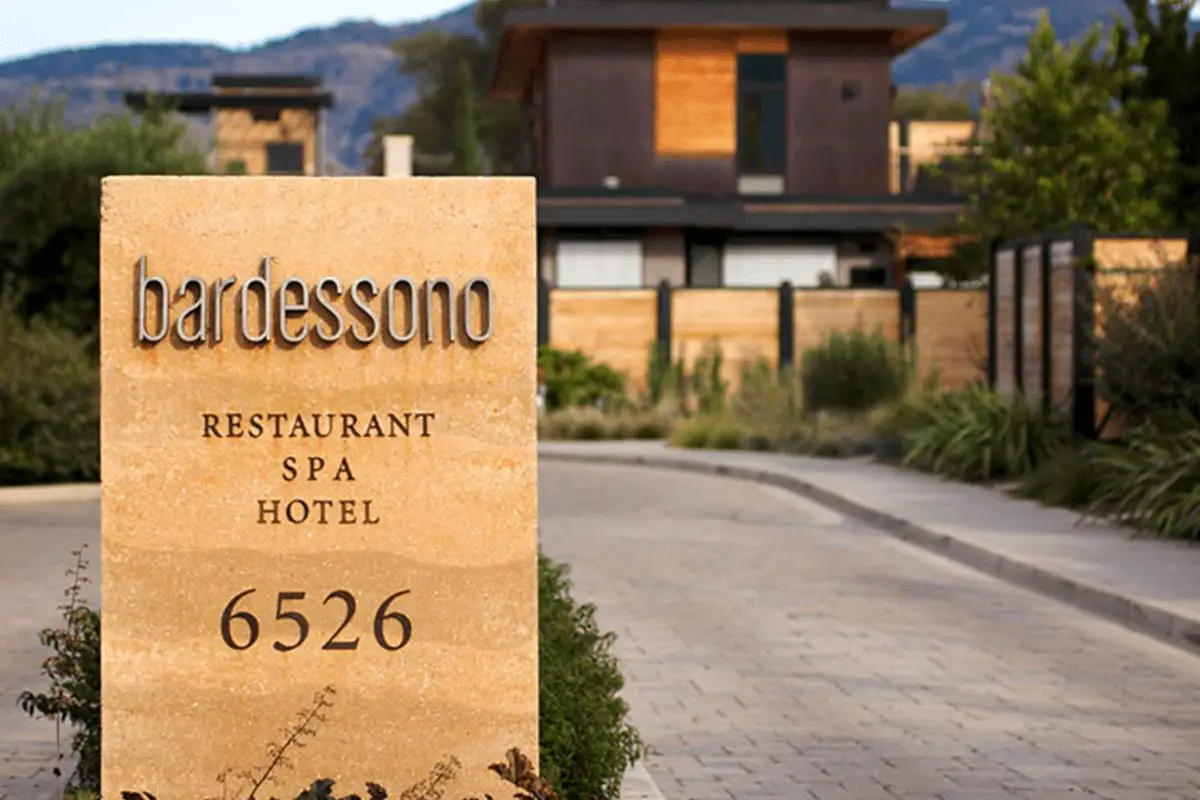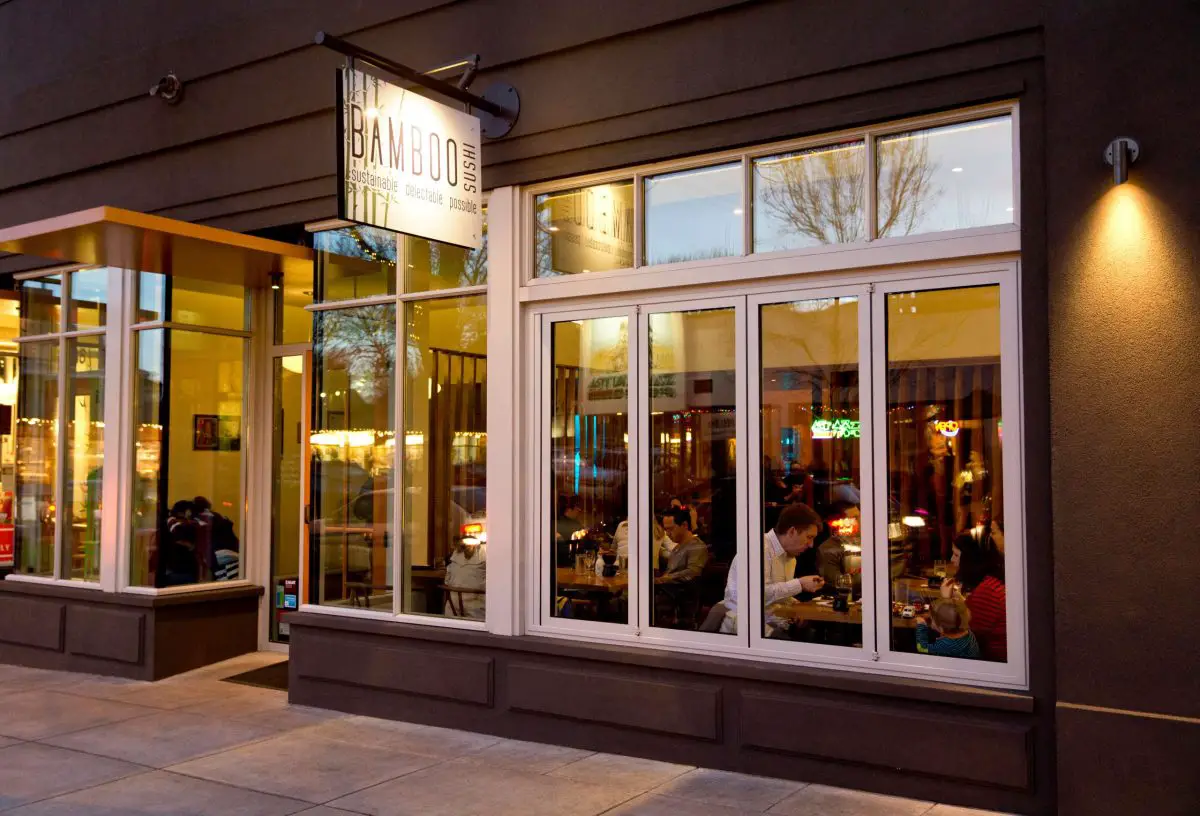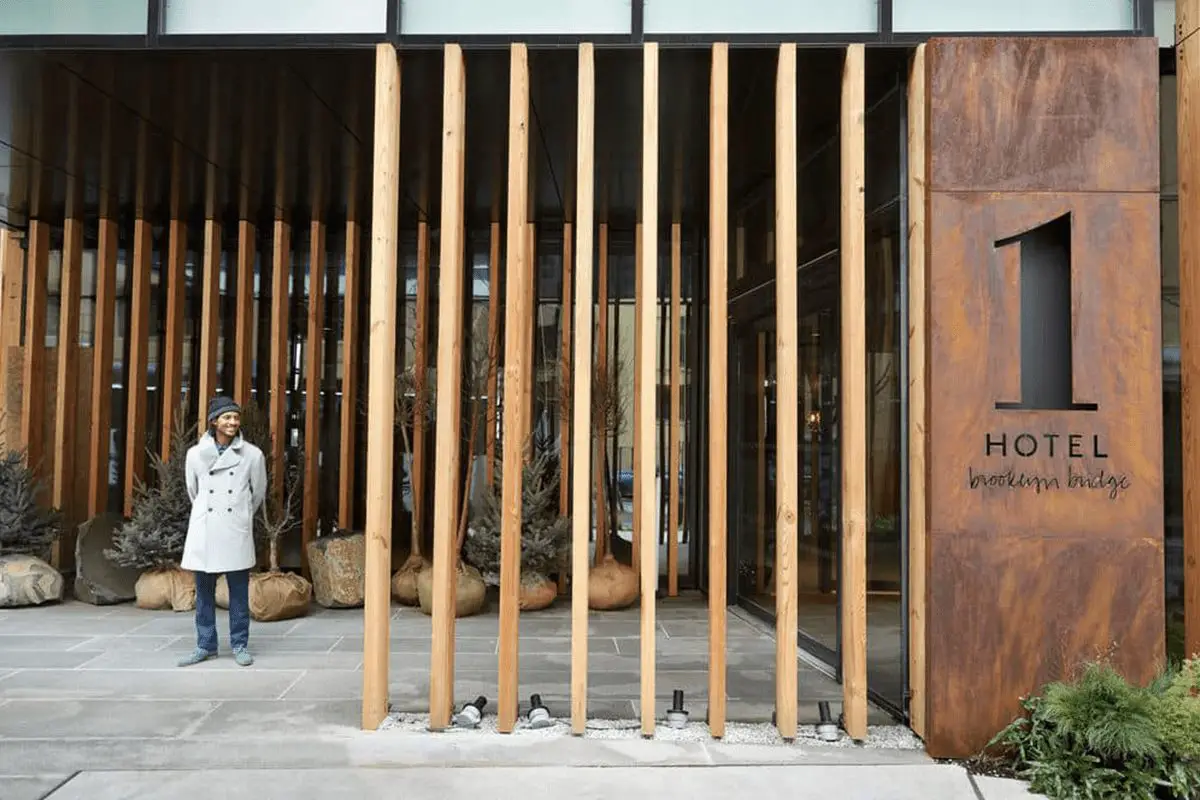While a lot of the heavy lifting to help curb climate change and other environmental concerns requires governmental initiatives there are plenty of things individuals and the private sector can do to make a difference too. None of us are perfect, but we can all incorporate new products and routines into our lives to contribute to the global campaign to be green. The better we take care of our planet now, the more we’ll be able to explore and experience all that it provides for us in the future
Interestingly, the hospitality industry has been an early difference-maker in this campaign, with restaurants and hotels sourcing locally and using products and materials to lower their carbon footprints. And while you may think these efforts might compromise the guest experience, in many ways they enhances it. Ironically, the push to “go green” is being made by many of the top, most luxury-centric names in the hospitality industry. Here are nine luxury hotels that also happen to be among the greenest in the US.
Aria Resort Casino (Las Vegas, NV)

ARIA is different from other hotels in Vegas. It doesn’t follow an artificial theme and the expansive lobby and casino floor is flooded with natural light as opposed to artificial fluorescent bulbs that can make your head ache after a few hours of gambling. Non-smokers will appreciate the hotel’s use of smell technology: vents emit a vanilla aroma so that even the casino floor, at which smoking is permitted, feels almost smoke free. The environmental and sustainability factors of the hotel—reflective rooftops, on-duty bicycle valets, personal in-room heating/cooling and lighting controls and farm-to-table restaurants—while not always visible to the human eye, give peace of mind, especially when one considers how much waste casino-hotels generate daily. CityCenter is the first hotel complex, retail district or residential development in Las Vegas to receive the U.S. Green Building Council’s LEED Gold certification and is the first new construction project of its size in the world to receive environmental certification of any kind.
The hotel’s modern and large rooms are decorated in earth tones and dark wood and feature keyless entries and blackout switches by the beds so that guests can retire for the night with one simple switch—a blessing when one considers the plethora of flashing neon signs along the Strip.
ARIA is also a culinary heavyweight with an array of fine dining choices, including Sage restaurant, which is currently in the running for the James Beard Foundation’s Best New Restaurant award. Thomas Keller recently dined there.
1 Hotel Brooklyn Bridge (Brooklyn, New York)

The third iteration of the 1 Hotels lifestyle brand (with sister locations in Central Park, South Beach and Washington DC) is pairing their core philosophy of melding eco-friendly design, sustainable architecture, philanthropic partnerships and superior service with the allure of East River panoramic views. Combining west coast chill with the thrill of the Big Apple? Hallelujah.
It won’t take you long to see why this brand isn’t called 2. Upon arrival at 1 Brooklyn Bridge, you’ll be entranced by the lobby’s 25 foot green wall, compliments of landscape architecture firm Harrison Green. Comprised of steel grating adorned with hand-placed plants and ever-growing vines, this greenery might have you feeling more connected with Mother Nature than when you were standing outside. This lush display is contrasted by an industrial spiral staircase that climbs two stories and features an obsidian rock boulder sculpture. This man-made meets Earth-given vibe permeates the entire hotel and lends perfectly to the eco-luxe ambience.
Such chic and yet functional surroundings were no coincidence of course. According to founder Barry Sternlicht, the careful curation of every material and an overall focus on retaining the hotel’s purpose to both serve and inspire guests helped shape his vision for the space.
“Confronted with how far Americans were lagging behind in changing our consumption habits, I created 1 Hotels to show sophisticated travelers that they can do good, live well, and connect with both the world and the community around them,” said Sternlicht.

Lest you think such talk is all for show, lets delve into the myriad ways this brand is walking the walk of their eco-friendly, wellness boosting mission. It all starts with the design of the hotel itself, which features a 54 percent ratio of regional and reclaimed materials. The pine beams you’ll be admiring are from the former Domino Sugar Factory and the walnut comes straight from Brooklyn Botanical Gardens. Design can’t go far without function, though, and 1 Brooklyn Bridge’s smooth operation doesn’t come at the expense of the environment. The property utilizes 100 percent wind power energy and features low-energy light bulbs, in-room recycling bins and a Triple Clear water purification system. Speaking of H20, the hotel operates a rain-water reclamation system that will reduce storm water runoff into neighboring streams over 50 percent and instead be used to irrigate Brooklyn Bridge Park during the summer. Nature isn’t hogging all the benefits, either—the property has also committed to donating a portion of in-room dining sales to the global humanitarian organization Action Against Hunger.
Crosby Street Hotel, (New York, NY)

The Gold LEED-certified hotel features 86 rooms and numerous common spaces, all in the heart of Soho. What makes the Crosby Street Hotel so remarkable is that its architects were able to ingeniously outfit it with sustainable features while working within the unique context of its distinctive Soho location. A mix of classic cast-iron architecture and 21st-century innovation, the street itself is one of the most intriguing in the neighborhood. Just a block from always-bustling Broadway, Crosby Street has managed to hold on to much of its original architectural character while becoming one of the most sought after addresses in the city.
To make the best—and greenest—use of the existing space, the hotel’s designers outfitted the building with landscaped spaces and green roofs, restoring 25% of the site with native and/or adaptive plantings. It’s a remarkably green oasis in the midst of a tightly packed New York City block. A miraculous 61% of the site is considered open space and all landscaping is water efficient, contributing to a 50% reduction in overall usage. Daylight, fresh air and air quality are obvious priorities, as is the use of sustainable materials throughout the building’s construction.
Beyond the numbers, Crosby Street’s green certification is brought to life in ways that are also designed to make a guest’s experience at the hotel exceptionally memorable. Into their regularly changing menu, the kitchen incorporates vegetables from a garden space on the 12th floor of the hotel, rigorously cultivated by the hotel’s head chef. Seasonal produce comes directly from the garden, which is also home to a Tudor-style chicken coop for four Araucana chickens that produce signature blue eggs. It is initiatives like these that earned the Crosby Street Hotel the distinctive title of Greenest Luxury Hotel.

Who would have thought you could feast on hand-picked veggies and freshly gathered blue eggs from heirloom breeds without leaving the confines of Soho’s coolest street? The great minds behind Crosby Street show us that indeed it can be done, and with plenty of style.
Proximity Hotel (Greensboro, NC)

Opened in November 2007 Proximity Hotel in Greensboro, NC quickly became benchmark for sustainability in the hospitality industry. In October 2008, the 147-room hotel—with over over 5,000 square feet of meeting and event space and the adjacent Print Works Bistro restaurant—became the first in the hospitality industry to be awarded LEED Platinum by the U.S. Green Building Council.
How did they accomplish this? For starters, the hotel uses 41% less energy than a conventional hotel/restaurant by using ultra efficient materials and the latest construction technology. This includes over a 100 solar panels covering the 4,000 square foot rooftop that heats 60% of the water for both the hotel and restaurant. The bistro bar is made of salvaged, solid walnut trees that came down through sickness or storm and room service trays made of Plyboo (bamboo plywood). Variable speed hoods in the restaurant use a series of sensors to set the power according to the kitchen’s needs and adjusts to a lower level of operation (typically 25% of their full capacity). Geothermal energy is used for the restaurant’s refrigeration equipment, instead of a standard water-cooled system. North America’s first Regenerative Drive model of the Otis’ Gen2 elevator reduces net energy usage by capturing the system’s energy and feeds it back into the building’s internal electrical grid. Building materials with recycled content include reinforced steel with 90% post consumer recycled content, sheetrock 100%, asphalt 25% and staircase steel 50%. And finally water usage has been reduced by 33% by installing high-efficiency Kohler plumbing fixtures. How’s that for a few modifications.

Print Works Bistro, adjacent to the hotel, features both classical and modern versions of French bistro using locally sourced foods. The restaurant also happens to serve more than 75 wines by the glass earning it an “Award of Excellence” from Wine Spectator.
Montage Deer Valley (Deer Valley, UT)

Back in 2015 Montage opened (and still operates) Montage Beverly Hills, one of the first ultra-luxury Gold Certified LEED hotels in Southern California. Following with it’s commitment to the environment, Montage continues to churn out new eco-friendly properties including their Deer Valley property which, when it opened in 2010, was the first LEED certified resort in the state of Utah, earning Silver Certification by the U.S. Green Building Council’s Leadership in Energy and Environmental Design (LEED) for New Construction V2.2.
An authentic yet elegant mountain getaway in the Wasatch Range (on the western edge of the Rockies and eastern edge of the Great Basin to be exact) Montage Deer Valley provides ski-in / ski-out access to one of America’s premier ski resorts and much more. Located just five minutes from Main Street, the retreat is home to a 35,000-square-foot spa sanctuary, inspired dining and year-round activities from mountain biking to fly fishing.
Operationally the resort has developed “green” operating principles guided by a management level Environmental Impact Group (EIG) which provides a myriad of internal programs. This includes; environmentally preferred purchasing (EPP) programs, waste management programs, water-quality management practices, energy management, and green housekeeping initiatives.
W San Francisco (San Francisco, CA)

Located in San Francisco’s SOMA neighborhood—home to many of the city’s tech companies it is fitting that W SF has embraced technology too. And while you may marvel at the digital aspect of the hotel from we love it for it’s green tech.
In 2015 W San Francisco was awarded LEED® Platinum certification—the highest ranking by the U.S. Green Building Council (USGBC). One of only five hotels in North America to be presented with the honor, W San Francisco is easily one of the greenest hotels in the country. It is also bar none the greenest hotel San Francisco, which says a lot considering San Francisco’s commitment to going green.
“We are honored to be recognized as the most environmentally-friendly hotel in San Francisco,” said Roger Huldi, General Manager of W San Francisco. “Our green efforts take place behind the scene, allowing our guests to indulge in luxury while feeling good about the positive impact our hotel has on the environment.”
W San Francisco is able to achieve this status by implementing a variety of green programs and practices including replacing HVAC cooling towers with energy efficient models, saving 300KWH/year, a 37% reduction of water consumption from LEED mandatory baseline through water efficient showers, faucets, and toilets in all guestrooms, 31% of all food and beverage purchases for the property meeting the LEED criteria for environmentally preferred (local, organic, and/or certified sustainable) and 50% of room lighting and 90% of its back-of-house lighting being energy efficient.
Of course, W San Francisco has a fun side to it too (most of these features are not even really noticeable to guests). Guests looking for a more upbeat vibe and a great location in SOMA will be right at home at the W, which caters to its guests with Millennial perks: a top-of-the-line fitness center, generous room-service hours, and hopping party-like vibe in its restaurants and bars.
Cavallo Point (Sausalito, CA)

The Bay Area’s award-winning Cavallo Point is a A LEED gold-certified lodge with a lot to offer it’s guest—aside from it’s stunning views of San Francisco and Golden Gate Bridge.
This well-appointed destination, which was also awarded the Travel & Leisure 2013 Global Vision Award for Sustainability, offers an especially unique combination of nature, nurture, culture and adventure. Situated in Sausalito, the resort and spa is close to Golden Gate National Parks, Muir Woods, Angel Island and Wilbur Hot Springs.
As for Cavallo Point’s LEED Gold certified accommodations, the resort’s eco-friendly structures combine modernity, luxury and environmental sensitivity to create a unique experience for guests. Each two-story guest house offers coziness with a private entrance, gas fireplace, and a heated floor. Rooms are furnished in bamboo, many of which feature panoramic floor-to-ceiling windows with breath-taking views of the Golden Gate Bridge and San Francisco Bay. All accommodations are designed to the highest standards of green architecture, and guest rooms and suites are dog friendly.
Bardessono Hotel & Spa (Yountville, CA)

Located in the culinary mecca of Yountville, this LEED Platinum–certified hotel takes its commitment to sustainability very seriously. Tufa limestone as well as other reclaimed materials were used to build the 62-room structure. Salvaged Monterey cypress, walnut and other local woods can be found inside the complex. All paints, carpets and fabrics used meet low volatile organic compounds (VOC) standards. The entire property is solar powered and heated and cooled via geothermal springs. Organic linens and cleaning supplies are utilized throughout. Water is recycled for irrigation and drinking water is filtered onsite. Vegetable waste is composted on premises and reused on the land. The hotel’s restaurant utilizes fresh produce and herbs from two organic gardens, one onsite the other a short distance away. LED, halogen or fluorescent bulbs are used. Even the waste from the initial construction was recycled, more than 93 percent of it.
One would think these initiatives would detract from the luxury and beauty of the hotel but that’s not the case. The Bardessono is extremely luxurious and high-end. The lofty, neutral rooms are expansive—starting at 550 square feet—and are outfitted with wall-mounted HD TVs, jetted, self-regulating soaking tubs, sensored light switches (to reduce energy use), private stone patios with views of the mountains and fluffy king beds enveloped in organic cotton that you can sink yourself into.
Nines Hotel (Portland, OR)

Located nine floors over downtown Portland atop the former Meier & Frank department store, the 331-room Nines Hotel opened in 2008 and quickly drew accolades for its efforts on the environmental front.
While undergoing construction, workers used low-emitting adhesives, paint and carpet to improve interior air quality, in addition to installing low-flow faucets and dual-flush toilets which save around 500,000 gallons of water every year. About 90 to 95 percent of the 24 million pounds of debris removed from the building was diverted from landfills and subsequently recycled.
The LEED Silver-Certified hotel receives all of its energy from renewable sources, including wind power and carbon offsets. Compact florescent lighting helps optimize the hotel’s energy consumption at a rate estimated at 26 percent less than code, helping it to prevent over 6 million pounds of C02 from being released into the air – the equivalent of removing over 500 cars from the road. Employees also compost and recycle used goods while the Nine’s cleaning staff use products that are Green Sealed Certified and meet LEE and IAQ guidelines.
Last but not least we we can’t neglect to mention the hotel’s Urban Farmer Steakhouse, which combines quaintness with 21st-century sustainable practices. The decor uses organic and reclaimed materials to offer diners the ambiance of a restored farmhouse with a modern touch. The restaurant’s farm-to-table menus emphasize locally-produced ingredients from the Northwest. Beef options are all organically raised and Urban Farmer’s 200-bottle wine list and beer offerings, in addition to its spirits, are all sourced from area brewers and vineyards. Those looking to mix elegant views of downtown Portland and Mt. Hood with an array of Asian cuisine and cocktails can find them all waiting at Departure, the sleek cafe and bar on the building’s 15th floor.




